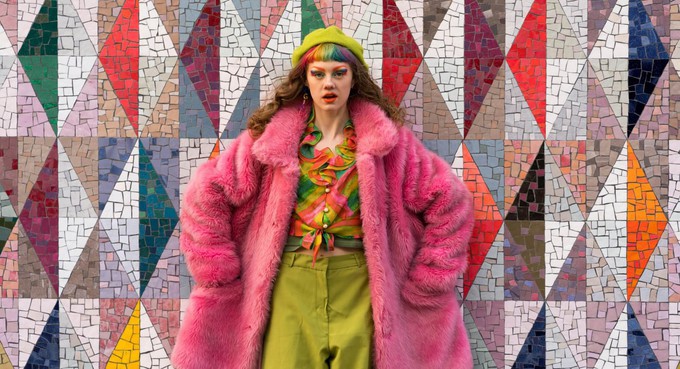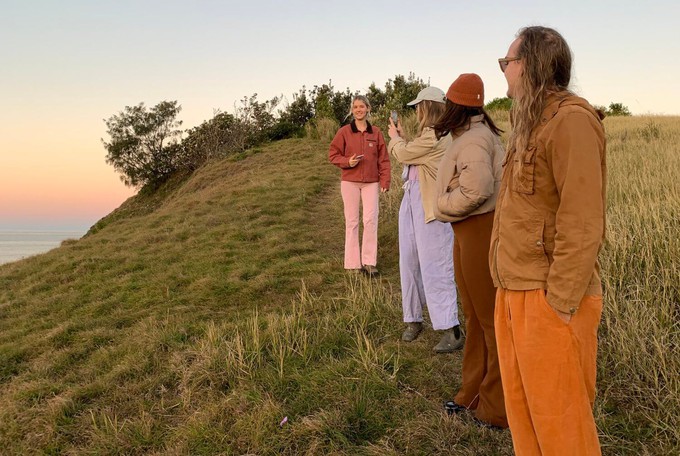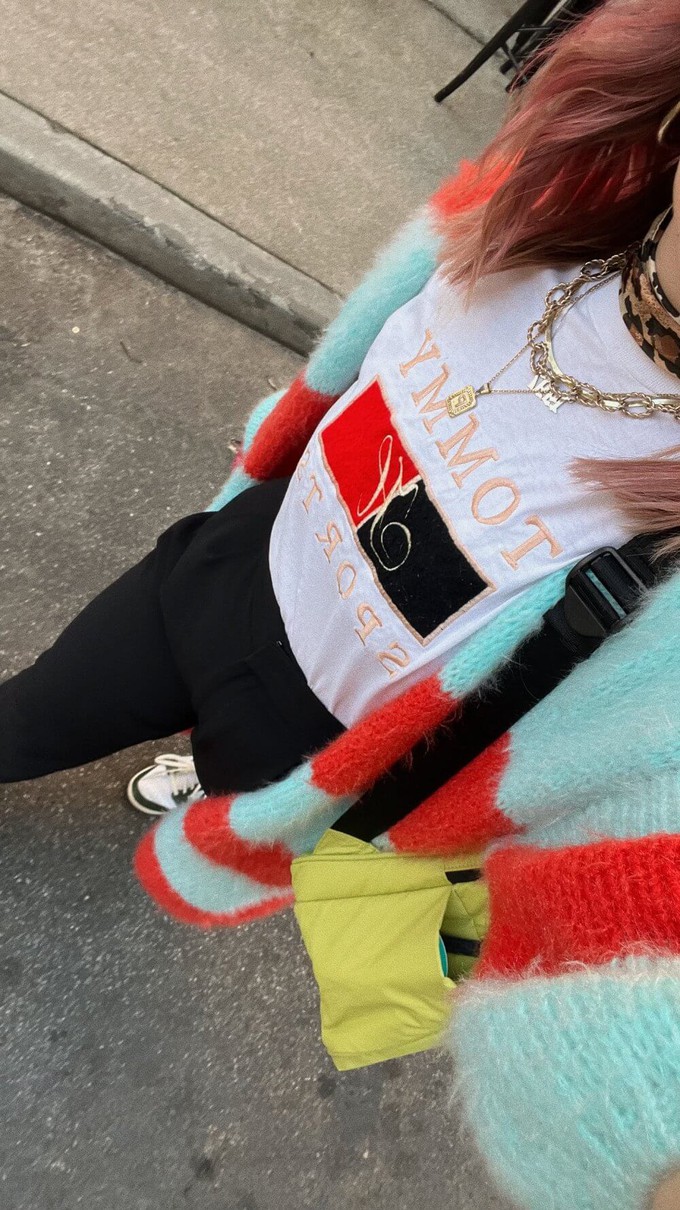- Clothes
- Bags
- Accessories
-
Inspiration
- Shoes
2026 Sustainable Fashion Trends & Predictions (Good & Bad!)

What will sustainable fashion look like, in 2026?
At Project Cece, we bring hundreds of ethical brands in one place to help eco-conscious consumers support them more easily, but unfortunately, this year, I’ve seen many of them struggle and go bankrupt. At the same time, I’ve noticed positive changes in this industry, too.
So, after analysing data and speaking directly to brands, I’ve compiled some sustainable fashion trends and predictions for 2026.
Here’s what (I think!) you can expect.
7 sustainable fashion trends and predictions for 2026

1. Individual style over trends
Sadly, fast fashion is still booming, but more and more consumers (especially Gen Z) are fed up with impersonal trends.
So, my main ethical fashion prediction for 2026 is an even bigger shift towards developing our own style: no more dressing to impress others but rather to express ourselves!
Our outfits will become more conscious, whether that’s by making a statement, including meaningful pieces, or saying something about our story and personality.
And since ethical fashion brands prioritise timeless or seasonless clothing rather than temporary trends, this is great news for them
What this 2026 sustainable fashion prediction will look like in practice:
- Made-to-order
- Upcycled fashion
- Curated vintage
- Buying fewer pieces that can easily be re-worn and styled into different outfits
- Brands partnering with smaller influencers and using authentic user-generated content
2. Prioritising natural and safe materials
Many consumers have been educating themselves on how to live better and be more healthy while having a positive impact on the planet.
In sustainable fashion, this often comes down to choosing kind fabrics and clothes free from harmful chemicals (the opposite of most fast fashion garments, basically).
However, natural doesn’t automatically mean ‘eco-friendly’ or ‘safe’. For example, fast fashion relies heavily on conventionally grown cotton, which is natural… but also loaded with bad chemicals and terrible for the planet.
So, try prioritising certified organic cotton, hemp, linen, and bamboo instead, and choose transparent brands that tell you how their clothes were made
What this 2026 sustainable fashion prediction will look like in practice:
- Natural and organic fabrics growing in popularity
3. Maximalism
From what I’ve seen lately (which also goes hand-in-hand with self-expression), I believe 2026 will be more about maximalism than quiet luxury, for Gen Z in particular.
This might sound like bad news for ethical brands, traditionally seen as plain, neutral, and minimalist. But here’s the thing: that’s not what sustainable fashion is about! Plenty of them offer ranges that are perfect for a maximalist vibe
What this 2026 sustainable fashion prediction will look like in practice:
- Bold colours
- Print clashes
- Layers
- Abundance of accessories
- Textures (for example, materials like linen) and subtle but noticeable features like weaves or pleats
- Statement pieces

4. Second-hand becoming even more mainstream
The second-hand market keeps growing, for good reasons (like consumers rejecting fast fashion trends or reducing waste) and sad ones alike (lower budgets due to economic uncertainty).
However, not many people know this, but vintage and second-hand fashion isn’t always as ethical as we think, and it contributes to waste colonialism in developing countries.
Still, there are ways of embracing it more sustainably
What this 2026 sustainable fashion prediction will look like in practice:
- Brands offering take-back schemes and reselling those items at lower prices
- Growth of resale platform and marketplaces
5. Bigger focus on quality, transparency, and the people and stories behind the clothes
It makes my blood boil, but sweatshops are still a thing: many fast fashion brands rely on dodgy supply chains, child labour, and garment workers trapped in modern slavery conditions. At the same time, more consumers are waking up to this.
Plus, the shift from trends to self-expression also points towards more meaningful clothes, made ethically or as part of a bigger mission.
"I think the craftsmanship of the actual people behind the clothes will be in a bigger spotlight. With all the deglobalization and us vs them, clothes hold these stories of how we can all come together to create something beautiful" – Urban Medley
On top of that, despite some U-turns, the EU has been working towards transparency and against greenwashing.
"Quality will be a big theme, with Digital Product Passports being implemented" – Three Brothers
What this 2026 sustainable fashion prediction will look like in practice:
- Great news for brands talking about their mission, supporting a good cause, or being transparent about the people behind their clothes!
- Stricter checks on their supply chains

6. Influence of AI
The rapid growth of AI in fashion comes with positive news (like brands saving costs, reducing waste, and optimising their supply chain) and… worrying ones alike
What this 2026 sustainable fashion prediction will look like in practice:
- More impersonal pieces, even faster production, and indie and native designers having their products or patterns ripped off
- I believe consumers will get tired of it and shift towards meaningful pieces with a story or mission
7. Fast fashion becoming even faster
Unfortunately, even though more consumers are embracing sustainable clothes, fast fashion has grown by 10.74% from 2024. So, I don’t see that slowing down
What this 2026 sustainable fashion prediction will look like in practice:
- Ultra-fast fashion giants like SHEIN will keep growing, tempting consumers (especially those with lower budgets) with their unsustainably cheap prices
- Lots of ethical brands will struggle to compete or reach enough consumers, and we might lose them
“It was never as easy as today to support impact-driven brands, and yet they’re still struggling. Be that change!” – Marcella Wijngaarden, Project Cece co-founder
So, I highly encourage you to be mindful with your purchases in 2026 (and beyond), and this can go hand in hand with some of these predictions:
- Focus on self-expression rather than trends (you’ll feel happier, too!)
- Buy less but better, choosing timeless, durable, and higher-quality ethical clothes that will last you for years and work with various outfits
- Support small brands that are actively trying to make the world a better place, one ethical garment at a time. You’ll find hundreds of them right here on Project Cece
These are my sustainable fashion predictions and trends for 2026 but don’t forget: we get to shape them with our money and actions!
Share our story
Related articles
Find Your Fashion Style for Your Star Sign (& Ditch Trends)
When you start dressing based on YOUR zodiac sign, you’ll probably feel more aligned. So, from colours to key pieces & vibes, here’s a simple guide.
From Micro-Trends to Long-Term Love for Your Clothes: 7 Steps
Worried slow fashion is limiting? I did too. Turns out, breaking free from micro-trends, finding your style, and wearing clothes mindfully is LIBERATING!
7 Positive Changes When You Quit Fast Fashion (Worth It!)
Thinking of saying “enough” to unethical clothes? You won’t just be changing your wardrobe: your life will change too—and for the better. Here’s how.
Project Cece is a platform that collects ethical fashion from vetted brands and shops in one place. Browse ethical fashion for women and men and find items that fit your style, budget and values!
_large.png)


